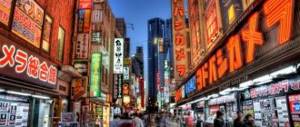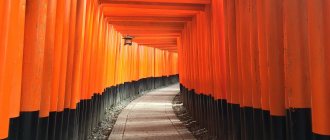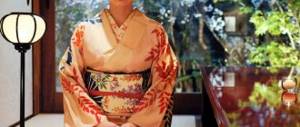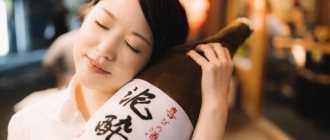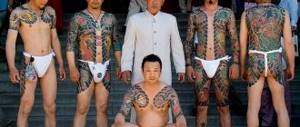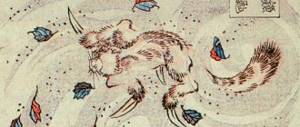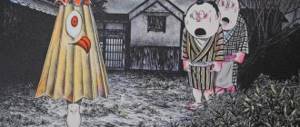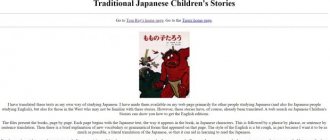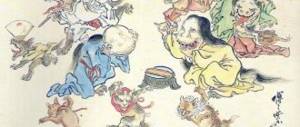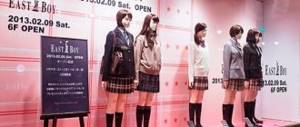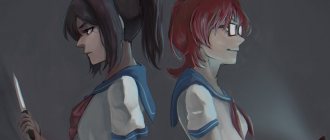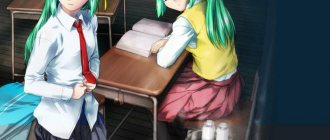Shodo (書道, "Way of Writing") or Japanese calligraphy is the art of fine writing. Like many other Japanese traditions, Shodo has its roots in China. For a long time, the most respected calligrapher in Japan was Wang Xizhi, a 4th-century Chinese calligrapher.
Using only brushes and ink, these calligraphic inscriptions became popular among high-ranking nobles and the Emperor himself.
Good calligraphy is considered an art and requires years of dedicated practice.
Japanese calligraphers created several new styles that are much more simple and emotional. During the Edo period (1600–1868), decorative styles such as kabuki-moji and jo-ruri-moji appeared.
Japanese calligraphy techniques
As we said, early Japanese calligraphy originated from Chinese calligraphy, so many of the principles and techniques are very similar. Main styles of Shodo:
Hieroglyphs of the Zhuanshu seal . This style of writing appeared in the 8th-3rd centuries BC. e. and became the official style in the Zhou and Qin kingdoms.
There are two main versions of it: the “great seal” (dazhuan) and the “small seal”.
Zhuanshu is the most commonly used of the archaic calligraphy styles.
Lishu , formal writing, is a style of Chinese writing, sometimes called zuoshu, or business writing.
This style of writing arose in the second half of the 3rd century BC. e. during the Qin-Han dynasties. Lishu was much
saved time.
This style is distinguished by the square configuration of the hieroglyphs, the characteristic rigidity of the structure of the hieroglyphs and the strict perpendicularity of horizontal and vertical lines. Also, due to saving space on bamboo plates, the width of the hieroglyph prevails here over its length.
The lishu style played an important role in the development of education and science in China.
Kaishu (kǎishū), statutory letter. This writing style originated during the Han Dynasty (206 BC - 220 AD) and flourished during the Tang Dynasty (618-907). The style was directed towards a more standard writing of hieroglyphs.
Due to the fact that kaishu was even more convenient compared to lishu, the style became popular and widespread.
Xingshu (Xíngshū), the “running style” is a historical style of Chinese calligraphy, which has the peculiarity that the features in this style merge with each other. The brush is almost never lifted from the paper. This is the youngest of the styles, originating from Kaishu.
An educated Chinese can read most of the written Xingshu.
Caoshu (cǎoshū) "quick writing" is the general name for the cursive styles used to write Chinese characters.
This style is characterized by simplicity, economy, smoothness, continuity, and as a result, writing becomes much faster than other styles. But such texts are difficult to read for those who are not familiar with tsaoshu. This style exists mainly as a type of shorthand writing or calligraphic style. People who can read standard or printed forms of Chinese characters may not be able to understand this style.
Edomoji is a Japanese calligraphic style invented during the Edo period, intended for advertising and signage.
It is used in China and Korea for Japanese restaurant signs.
Let's write the hieroglyph "one"
Place the brush at an angle of 45 degrees.
It will be written more beautifully this way. We press the brush diagonally and smoothly move it to the right, at the end we press again and release.
This is a simple kanji, but it is quite difficult to write.
Let's try to write again. Look carefully! Press the brush diagonally. Slowly we lead, we lead, and after pressing at the end, we release. It didn't work out very well, let's try again.
Press at an angle of 45 degrees, it is very important to move the brush slowly.
Press at the end and release. I hope you understand how to write the hieroglyph “1”.
Let's move on to the next kanji.
We have already talked about how to hold the brush.
Tools and materials used in Japanese calligraphy
In ancient times, people had to make their own instruments to practice Shodo, but nowadays things have changed.
Now you can find all the necessary accessories in our store. Modern technologies allow you to order everything you need online, and in a short period of time you can try your hand at Japanese calligraphy.
Now let's look at what exactly a Shodo calligraphy set should consist of.
The four most basic instruments have been collectively called the four treasures of the scientist:
So, the first treasure - the Brush - was usually made from animal hair... or from the hair of small children (they said that such brushes brought good luck in imperial exams).
Modern brushes are made mainly from goat, wolf, rabbit, weasel hair, or a combination of them.
The hair is painstakingly sorted by softness, hardness, thickness and length. Real, professional brushes are assembled by hand.
Different brushes are used for different styles of calligraphy and writing.
Washi paper (和紙, washi) is Japanese paper . It is made from fibers from the bark of the gampi tree through a long and complex process. Cheaper grades of paper can be made from bamboo, hemp, rice and wheat.
Washi paper is characterized by its uneven texture and white color.
This paper is also so durable that it was used to make various everyday items such as clothing, household items, toys, as well as robes and ritual items for priests and Buddha statues. And during World War II, washi paper was used to make shells for bomber balloons launched across the Pacific Ocean to the United States.
Nowadays, washi is used mainly for Japanese calligraphy.
The third jewel of a scientist is Mascara. Japanese calligraphy and painting traditionally use hard, dry ink.
Mascara is made mainly from soot and animal glue, sometimes with the addition of incense.
In order to make mascara, you need to grind the mascara stick and mix it with a small amount of water to get a dark liquid. Artists and calligraphers can vary the concentration of the resulting ink depending on their preferences by decreasing or increasing the amount of dry ink or water.
The ink stone is the fourth jewel of the scientist; it is used for grinding hard carcass.
Despite the name ink stone, ink stones can be made from materials other than stone, such as porcelain, metal, wood, etc. In noble houses one could find very expensive devices made of crystal, jade, various precious stones, gold and silver.
Japanese script: Katakana
It is believed that, unlike hiragana, this alphabet is more difficult to remember. This may be due to the fact that it is used less frequently. It also contains many similar, almost identical, letters: ソ (so), ン (n), シ (si) and ツ (tsu). Therefore, you need to pay special attention to the direction and order of strokes.
As in the first alphabet, you first need to understand the sequence of traits. For this it is better to use simple copybooks. Practical sheets with tracing lines will help you consolidate your knowledge. Then you can move on to children's copybooks with words.
Once the basics are learned, you need to start practicing more serious writing in katakana.
You will find additional printable katakana copybooks here.
You will have to deal with copybooks often throughout your learning journey. There are three types of writing in the Japanese language - hiragana, katakana, kanji - and each character in them is written in a certain sequence. As soon as the two syllabic alphabets are completed, you can begin to study hieroglyphs.
Download a special notebook for the Japanese language with empty cells
presented below. This way, as you learn new words and grammar, you can immediately practice spelling.
Shodo and Zen Buddhism
Japanese calligraphy has been greatly influenced by the aesthetics and practices of Zen Buddhism. It is based on principles that emphasize connection with the spiritual rather than the physical. In Zen it is also a means of meditation. Therefore, shodo is often used in Zen monasteries.
Anyone who practices Japanese calligraphy knows that brush verticality, hand position, ink preparation, brushwork, and concentration on what is coming out on the paper are key elements in writing good calligraphy.
To write Zen calligraphy masterfully, you need to clear your mind and let the characters flow out of you, rather than practice and make great effort. The Japanese philosopher Nishida Kitaro called this state Mushin (mindless).
Next hieroglyph: "Man"
Next, also, press at an angle of 45 degrees and smoothly move obliquely.
The next feature: apply pressure and lead in the other direction, stop here, apply pressure and slowly release, leading to the right. It was a hieroglyph for a man.
Those. apply pressure in 3 places.
Let's try again!
While writing down the previous kanji for “one” and “person,” we went through 2 basic movements: tome (one) and harai (person).
Japanese calligraphy today
Today, one of the leading associations in the field of Japanese calligraphy is the Association of Masters of Modern Calligraphy, which was founded in 1948.
In modern Japan, Shodo is a popular class for elementary schools. Many parents believe that children's determination and stillness while practicing calligraphy develop useful skills. In high school, calligraphy is one of the arts subjects, along with music or painting.
Some universities, such as the University of Tsukuba, Tokyo Gakugei University, and Fukuoka University of Education, have dedicated calligraphy departments that emphasize teaching programs in Shodo calligraphy.
Contemporary Museum of Calligraphy
The Museum of Calligraphy is located in Sokolnichesky Park in Moscow. The Calligraphy Museum displays works of art by calligraphers from 40 countries. Among them are unique examples of writing, and among the exhibits there are world masterpieces written by famous calligraphers.
Contemporary Museum of Calligraphy
The Museum of Calligraphy presents exquisite exhibits of European and Slavic writing, works of the Arab and Jewish schools of calligraphy, strict features of Japanese calligraphy, examples of Chinese writing from antiquity, which reveal the history of the origin of the art of calligraphy; also foreign and domestic books on calligraphy; rare handwritten publications issued in single editions; writing instruments of the present and past.
